Known for their beauty, intelligence, and excellent talking abilities, Alexandrine parakeets have been popular as pets for centuries. Named for Alexander the Great, who is said to have had many of these birds, it was an exotic pet owned by nobility and the elite. This medium-sized parrot is the largest of the Asiatic parakeets. It is an affectionate bird that tends to be a one-person bird, forming deep bonds with its human keeper.
Species Overview
Common Names: Alexandrine parakeet, Alexandrine parrot
Scientific Name: Psittacula eupatria; Five subspecies include P. e. eupatria, P. e. nipalensis, P. e. avensis, P. e. magnirostris, P. e. siamensis
Adult Size: Up to 25 inches
Life Expectancy: Up to 40 years
Origin and History
This species originated in India and Sri Lanka. The Alexandrine parakeet lives in forests, woodlands, agricultural lands, and mangrove forests of up to 3,000 feet in elevation.
The parrot is named after Alexander the Great, who transported numerous birds from Punjab to European and Mediterranean regions. These birds were prized by royalty and nobles. Feral populations currently live in Spain, England, Belgium, the Netherlands, Germany, Turkey, the Arabian peninsula, Iran, and Hong Kong.
Temperament
Tame, handfed Alexandrine parakeets can make loving and affectionate pets, although they tend to become "one-person" birds. They strongly bond to a favorite family member while shunning others within the household.
Like other Asiatic parakeets, many Alexandrine parakeets go through a hormonal, aggressive bluffing phase during adolescence (age 4 months to 1 year), which can be difficult for less seasoned bird owners to handle. This period can last from two weeks to two years, depending on the bird.
With proper socialization and the use of bonding techniques, Alexandrine parakeets generally settle nicely into their new home environment and thoroughly enjoy interacting with their owners. These birds are highly intelligent and are known to be excellent talkers, making them very popular pets.
Speech and Vocalizations
Alexandrine parakeets can be quite noisy and loud, so they are probably not the right choice for those who live near neighbors. Their powerful vocalizations carry over a long distance in the wild, so it can be challenging to keep one in an apartment or condominium setting.
This bird has an excellent capacity for imitating human speech clearly. The Alexandrine parakeet has a variety of calls, including ringing sounds, loud and deep "klak" sounds, and a resounding "gr-aak" call. Its calls are deeper than the Indian ringneck parakeets, and it's alarm calls are louder, too.
Alexandrine Parakeet Colors and Markings
Slender Alexandrines can reach a length of 25 inches, and most of this length is due to its long, elegant tail feathers. They are slightly more stocky than Indian Ringneck parakeets.
Coloring is predominantly green with blue-grey on the cheeks and back of the neck, yellow-green abdomen, red patch on the shoulders, a massive red beak with yellow tips. The underside of the tail is yellow; the top of the tail is green and blue with yellow at the tip.
Alexandrine parakeets are a dimorphic bird species, meaning you can tell males apart from females. Adult males have a black and rose-colored ring around their necks. Females are the same color without the neck rings.
Caring for an Alexandrine Parakeet
Known for their beauty, intelligence, and excellent talking abilities, Alexandrine parakeets need a lot of space, hours of interaction, and supervised out-of-cage time every day. Care for this bird can be a decades-long commitment.
This bird may be a medium-sized parrot, but it still needs a large cage to accommodate its long tail feathers. At the minimum, provide a cage that is at least 3 feet tall and 2 feet long and wide.
These birds love to bathe frequently and play in the water. Provide a large water bath at least once a week. Your bird might also like an occasional misting.
Common Health Problems
Alexandrine parakeets are relatively healthy birds; however, they are susceptible to several conditions:
- Polyomavirus: A deadly virus; hatchlings and juveniles are most at risk
- Psittacosis: Also known as parrot fever, this disease in humans caused by the chlamydia bacteria
- Aspergillosis: A fungal respiratory infection caused by the aspergillus fungus
Diet and Nutrition
Most pet Alexandrine parakeets do well on a diet consisting of fresh vegetables, leafy greens, grains, some healthy seed, tree nuts, and a high-quality, commercially-made, formulated pelleted diet. Fresh vegetables are the cornerstone of a good diet for parrots.
Offer your bird 1/4 to 1/2 cup of pellets and 1/4 to 1/2 cup of fruits and vegetables daily. Increase or decrease the amount according to your bird's appetite. Remove the uneaten foods to prevent spoilage.
Exercise
Alexandrine parakeets are very active birds. They need plenty of exercise to maintain their physical and emotional health. A large flight cage is preferable for these birds. They need space to be able to move around without damaging their long, beautiful tail feathers.
These birds require a minimum of 3 to 4 hours a day to stretch, play, and exercise outside of its cage. Supervised playtime needs to be in a safe, "bird-proof" area. Alexandrines are very curious and can get into trouble if left to roam unattended. These intelligent birds get bored quickly, so provide plenty of chewable, bird-safe toys.
Friendly and affectionate
Intelligent, can learn to speak
Can be loud, not well-suited for apartments
Can become one-person birds and territorial with others
Where to Adopt or Buy an Alexandrine Parakeet
Contact local adoption and rescue organizations to see if there is one that might be for you and spend some time with them and their birds. Observe how the birds interact with their caregivers and other family members.
Alexandrine parakeets can cost from $500 to $1,500. Rescues, adoption organizations, and breeders where you can find Alexandrine parakeets include:
- Northeast Avian Rescue
- Bird Breeders
- Companion Parrots Re-homed
If you're going the breeder route, make sure that the breeder is reputable by asking them how long they've been breeding and working with Alexandrine parakeets. Also, make sure that the bird you want to take home is alert, active, and exhibits all the signs of a healthy bird, such as bright eyes, clean feathers, and full crops.
More Pet Bird Species and Further Research
If you are interested in similar species, check out:
- Indian Ringneck Parakeet Species Profile
- Quaker Parrot Species Profile
- Rainbow Lorikeet Species Profile
Otherwise, check out all of our other medium bird species.
Related Article

Gloster Canary: Bird Species Profile
Gloster canaries are small birds that are bred for their shape instead of their colors or song. The
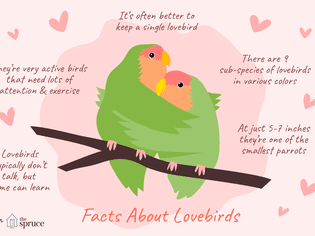
Facts About Lovebirds
Lovebirds are one of the most popular pet parrot species, and for those who are familiar with them,
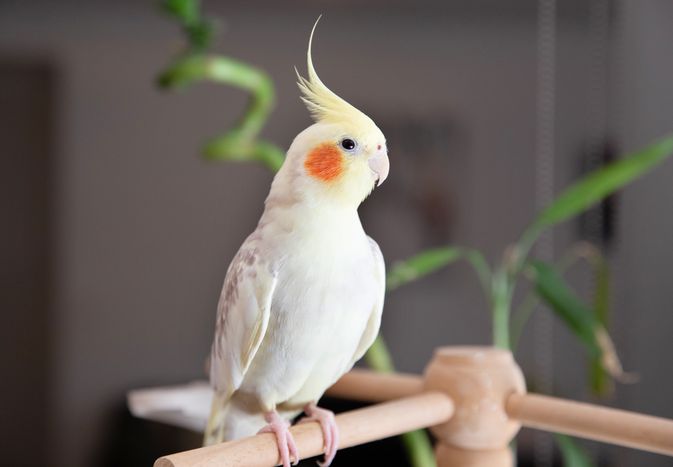
8 Top Small Pet Birds
Good things come in small packages and small pet birds can be excellent companions. They're gen
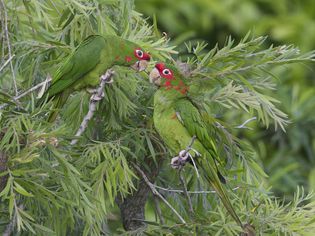
Mitred Conure (Mitred Parakeet): Bird Species Profile
The snappy green and red mitred conure is an exuberant, small-to-medium-sized parrot that loves to
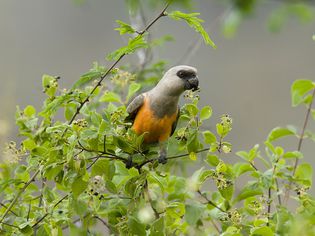
Red-bellied Parrot: Bird Species Profile
While its name can be confusing to some people since it doesn't actually have red on its belly,
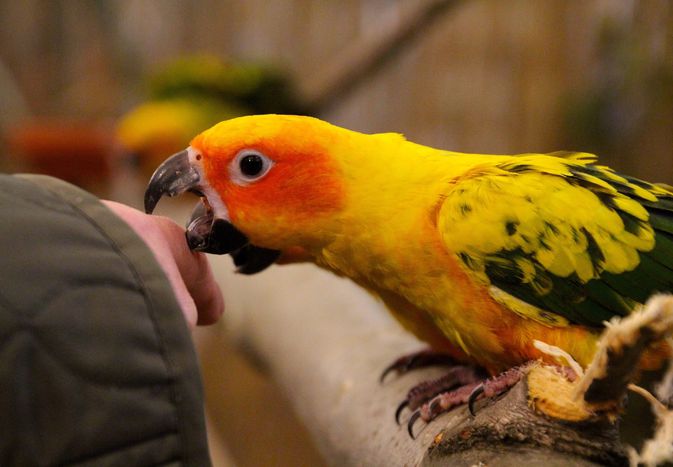
Why Is My Pet Bird Biting and "Beaking" Me?
When a pet bird uses its mouth on your hand, you may just be being "beaked" rather than bit
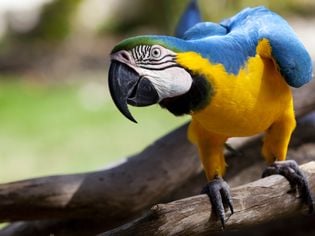
Psittacosis (Parrot Fever) in Birds
Also known as parrot fever or avian chlamydiosis, psittacosis is an avian disease that many bird ow
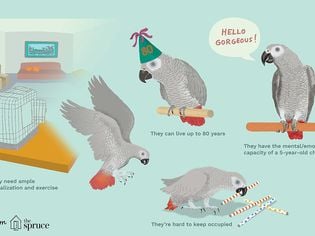
Facts About African Grey Parrots
If you've ever seen an African Grey parrot, then you know that they are beautiful birds, but di
About WhiskerClub
We are a premier digital platform committed to delivering high-quality content to our readers. Our mission is to provide accurate, reliable, and engaging information that adds value to our audience's daily lives.
Our team consists of experienced content creators and subject matter experts who uphold the highest standards of professionalism. In an era of information overload, we curate content with care, ensuring our users receive only the most relevant and trustworthy information.
Beyond just reporting facts, we focus on depth and context. Through expert analysis, comprehensive research, and clear presentation, we help our audience gain meaningful insights and make informed decisions.
We take pride in being a trusted information source for our growing community of readers. Our user-first approach means we continuously adapt to provide content that meets our audience's evolving needs and interests.
Innovation and excellence drive everything we do. We're committed to improving our platform and services to deliver the best possible experience for our users.

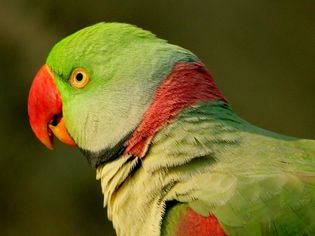
Comments on " Alexandrine Parakeet: Species Characteristics & Care" :